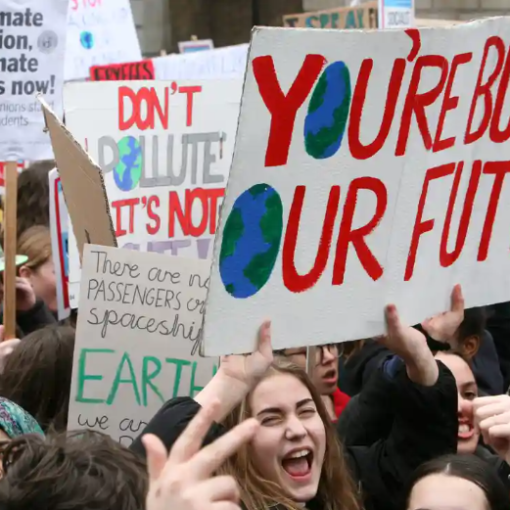By Susan Biniaz*
Hundreds of pages have been written about what a Biden Administration should do to reduce U.S. greenhouse gas emissions, create green jobs, and effect the U.S. transition to a carbon-neutral economy. But when it comes to what President Biden should do internationally, there’s often just one sentence – rejoin the Paris Agreement. Rejoining Paris is absolutely essential. But President Biden also needs to grab Paris and run with it.
The Paris Agreement is an excellent foundation for international action on climate. Not only was it a feat of multilateral diplomacy back in 2015, but it contains all the ingredients we need now:
- It’s the first and only global agreement to include the pursuit of limiting global temperature rise to 1.5 degrees C.
- It requires an emissions-related contribution from each country, as well as robust reporting and review of each country’s emissions and implementation.
- It calls for regular aggregate review of global progress and updating of national contributions.
- It aims at increasing resilience to climate impacts, as well as aligning financial flows with the Paris temperature and resilience objectives.
- It enjoys worldwide participation – at least until November 4th, when U.S. withdrawal takes effect.
Importantly, the Agreement’s design, which provides for each country to “nationally determine” its emissions contribution, allows the world to avoid wasting precious time constantly re-negotiating and focus instead on implementing – and raising – climate ambition. Paris also engages a wide variety of actors taking climate action, i.e., not just national governments, but companies, financial institutions, cities, states, etc. This is highly unusual for a “traditional” international agreement – and highly necessary for this issue, where such actors produce both emissions and solutions.
There is no question that the world has not done enough. There has been insufficient political will. And it hasn’t helped that Paris suffered two gut punches since entering in force: Trump’s walk-away and, more recently, COVID-19.
But a Biden Administration can help to turn this around:
First, the U.S. needs to rejoin the Paris Agreement. On Day 1. There is no domestic impediment to doing this, and it will send a signal right away that combating climate change is at the top of the U.S. foreign policy agenda. It is also step one in undoing the perverse rejection by the Trump Administration of an agreement that is 100% in the U.S. national interest. Once the U.S. officially becomes a party again (i.e., thirty days after rejoining), it will have an obligation to submit an emissions target or, in Paris parlance, a “nationally determined contribution” or “NDC.” It can meet that obligation in several ways, including through a placeholder target pending development of its 2030 target – which is likely to take several months.[1] It should also re-submit a U.S. mid-century decarbonization strategy, hand in delinquent reports, and begin again making U.S. contributions to the Global Climate Fund.
Second, the U.S. should early on articulate a long-term global vision regarding decarbonization. It could take a Paris-based aim (e.g., net zero emissions) and accord it a time frame (e.g., no later than 2050). It might also pick a particular sector and set a goal (e.g., with respect to electric vehicles). In selecting its global priorities, the Administration might take into account which ones would deliver the most emission reductions, which ones are the most irreversible, which ones are most likely to be achieved, and/or which ones the U.S. has the most tools to advance. By virtue of both the sheer size of the U.S. economy and the capacity of the United States to lead a global effort, the U.S. vision will influence the rest of the world’s ambition.
Third, it will be important for the U.S. to use multiple fora to advance the three Paris objectives (limiting global temperature rise, enhancing climate resilience, and “greening” financial flows). This means not only restoring key bilateral climate relationships but reviving the U.S.-led Major Economies Forum, which was a highly effective grouping of key countries. It also means insisting that climate concerns be addressed by a wide range of international bodies (including not just environmental fora, such as those related to biodiversity and the ocean, but economic institutions, including those relating to trade and investment); spearheading multi-stakeholder coalitions; doubling down on the climate imperative in the G7 and G20 (fora in which the Trump Administration has been downright hostile to the climate issue); restoring climate to a central place in the Arctic Council (where the Trump Administration walked away from the collective target on black carbon); seriously re-engaging in efforts at ICAO and IMO to reduce emissions from aviation and shipping, respectively; and integrating climate issues into all aspects of U.S. diplomatic engagement. A combination of fora will likely be needed to get at carbon-intensive overseas financing, including China’s Belt and Road Initiative.
Fourth, the Administration should seek Senate approval of the Kigali Amendment to the Montreal Protocol, which regulates hydrofluorocarbons. HFCs were relied upon as a substitute for harmful ozone-depleting substances but turned out to be powerful greenhouse gases. International implementation of this amendment has the potential to take a significant chunk out of expected warming.
Fifth, the Administration should take institutional steps to reflect the priority it attaches to the climate issue. This could include, e.g., organizing the White House and relevant agencies in ways that embed climate considerations in U.S. foreign policy and national security, the appointment of climate experts in non-traditional places, and re-instatement of the State Department’s Special Envoy on Climate. In addition, the President could issue an Executive Order laying out key elements of climate-related process and/or policy. Such steps, while notionally internal, would nevertheless resonate internationally both substantively and symbolically.
Last, but far from least, the U.S. should employ all the tools in its diplomatic toolbox to promote implementation — and enhancement — of the emissions commitments under the Paris Agreement. The Agreement is a vessel, into which each country pours its nationally determined contribution. Together, these NDCs can add up to weak tea or strong wine. So it’s imperative that the contributions progressively increase, in scale and speed, to meet the climate challenge. This year had been the agreed point at which Parties to Paris were expected to update, or at least seriously consider updating, their NDCs. However, the pandemic has delayed many countries’ ability to focus on their NDCs. At the moment, much attention is being paid to ensuring that COVID-19 recovery plans and stimulus packages are climate-friendly; however, 2021 will be a critical year for an all-out focus on NDC enhancement.
Our 2021 diplomatic tools must include not only American global leadership and assistance, but seriously addressing climate change at home as well. And here’s where the rubber of U.S. international climate diplomacy meets the road of U.S. domestic action. While scientists were busy telling us that the climate risks were worse than we thought, the Trump Administration was busy trampling all over U.S. climate laws and regulations, setting the U.S. back both at home and internationally. The new Administration needs to build back the legal and policy foundation for U.S. climate action not only to significantly reduce our own emissions and create a green domestic economy but, in buttressing a strong U.S. NDC for 2030, to bolster the U.S. ability to call upon other countries to do likewise. Ideally, Congress would hand the Administration a sweeping climate law early in the year, maximizing the effectiveness of U.S. diplomacy; in any event, the Administration and Congress should quickly turn to the business of climate legislation and show the world we put our money where our mouth is.
There will obviously be challenges. The world is not currently on track to avoid the worst climate consequences. The U.S. has lost ground, with its domestic and international climate retreats. And diplomatic relations are not where they were four years ago. However, time is short, and the issue is too important. The next Administration must grab Paris and run with it.
[1]For a further discussion of U.S. options regarding its next NDC, see https://blogs.law.columbia.edu/climatechange/2020/03/11/returning-to-paris-the-next-u-s-ndc/
*Susan Biniaz is a former Deputy Legal Adviser at the U.S. Department of State. She was the lead climate lawyer, and a negotiator, from 1989 until early 2017. Since leaving the Government, she has been teaching at Yale Law School and the Yale Jackson Institute for Global Affairs. She has also been a David Sive Visiting Scholar at the Sabin Center for Climate Change Law.
Tiffany is the Communications Associate at the Sabin Center for Climate Change Law.





